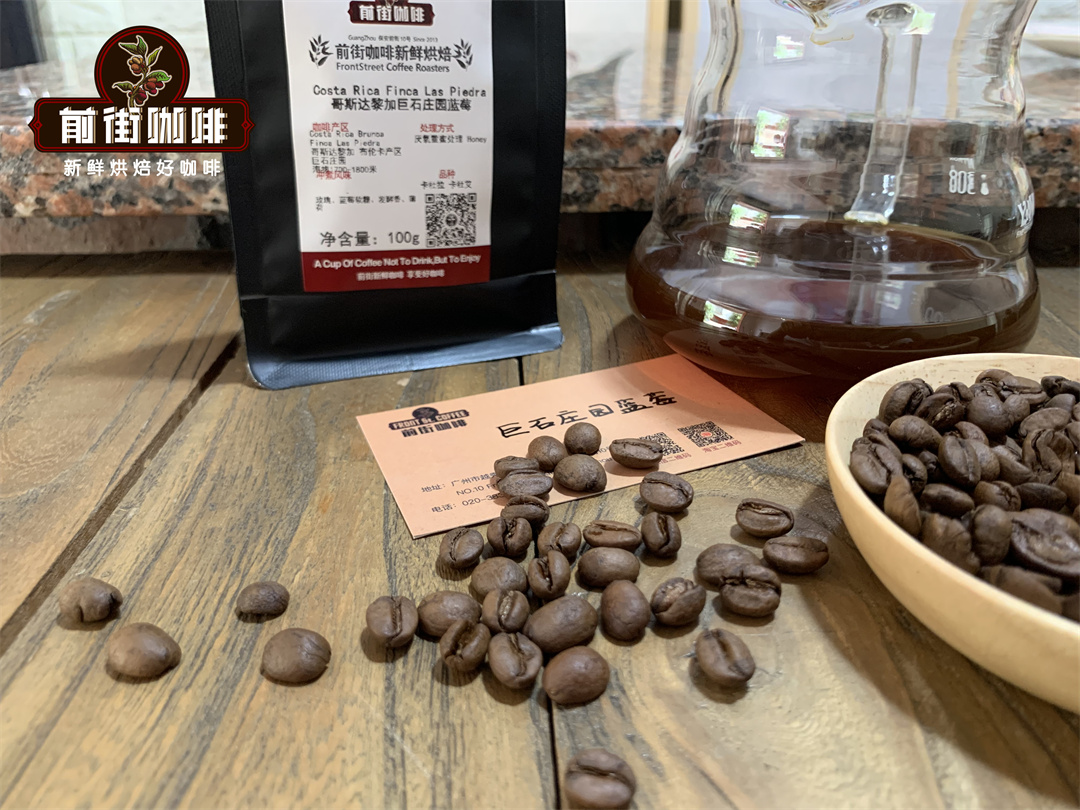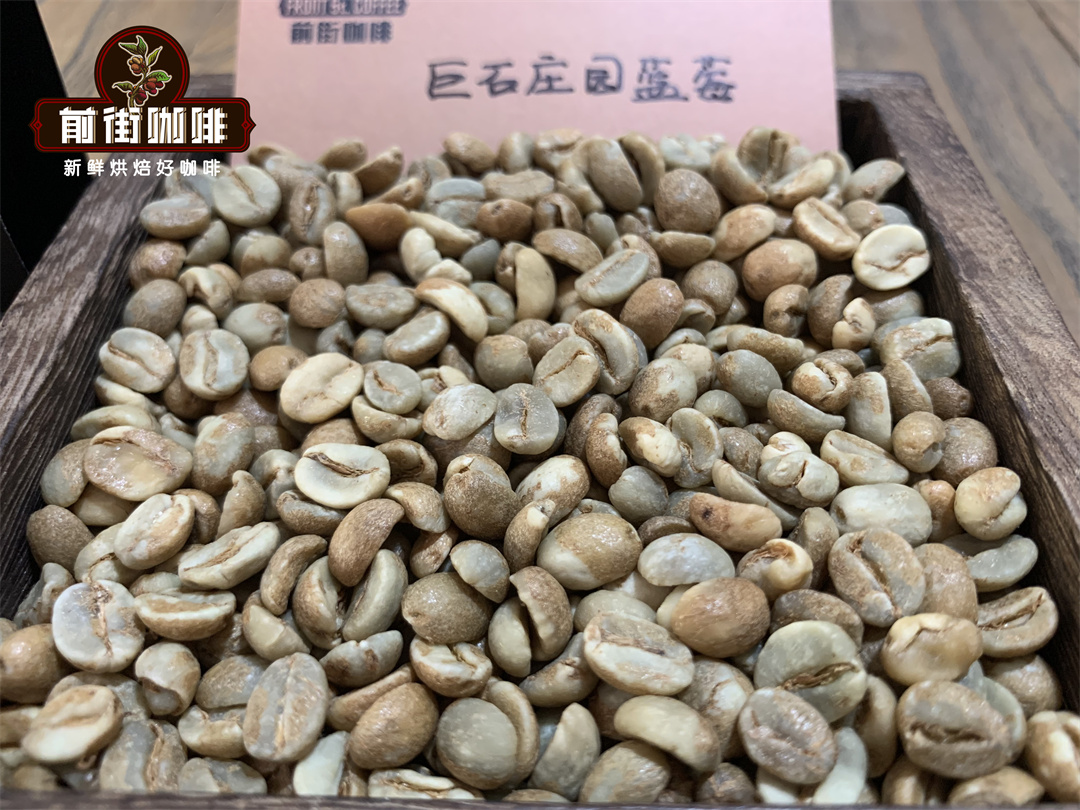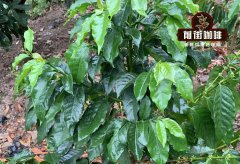Blueberry jam coffee blueberry sugar coffee Stonehenge manor blueberry coffee anaerobic heavy honey treatment
Among the newly produced beans tested recently, when the cup reached this coffee bean, it seemed to be full of blueberry jam. This bean flavor is very rare. He uses blueberry as the main tonality, with a mellow taste, and is very sweet. Combined with the right acidity to form the flavor of blueberry juice, it is quite amazing.

High temperature: blueberry candy strawberry
Medium temperature: blueberry juice cream
Low temperature: blueberry yam
Blueberries at Stonehenge Manor, Costa Rica
Producing area: Brenka
Manor: Stonehenge Manor
Altitude: 1700-1800m
Treatment method: anaerobic heavy honey treatment
Varieties: bourbon, Kaduai
Grade: SHB
The producing areas of Costa Rica
Costa Rica was the first country in Central America to produce coffee, which was introduced to Costa Rica in the early 17th century. Costa Rica has eight different coffee producing areas, including Tarazu, the western valley, the central valley, Tresrios, and Brenka.
Brenka producing area
The Brenka region is a southern part of Costa Rica, where coffee production accounts for about 20% of the country's coffee production. Because of the low altitude, coffee in this area is produced on hillside farms. It consists of Coto Brus, Buenos Aires and Perez Zeledon states. Coffee cultivation in the region began at the end of the 19th century when the first immigrants arrived from the coffee-growing areas of the Central Valley and brought a deep-rooted Costa Rican coffee culture. The altitude is between 800m and 1700m, and the average temperature is 22 ℃. The local conditions can meet the growing environment of demanding flavor coffee. The total coffee planting area is about 12000 hectares, distributed on 4200 farms.
Stonehenge Manor is located in the Brenka region of Costa Rica, hence its name because it is adjacent to the famous Costa Rican giant stone ball. The farm soil is a mixture of red mud and plaster, which is suitable for producing high-density coffee.

About anaerobic treatment
First, the first stage of 30 hours of fermentation, this stage is to stimulate the sweetness of coffee and fruit tonality. Remove the peel, put it in a round plastic jar, input carbon dioxide and control the PH value in the barrel. Cold nights allow coffee beans to ferment longer without worrying about the danger of overfermentation. The coffee is clean, mellow and thick, with intense sweet and sour cherries and typical Costa Rican sweet fruit aromas.
Second, finish the anaerobic fermentation and enter the second stage of honey treatment fermentation. During the day, put the pectin beans on the African bed, control the temperature below 40 degrees Celsius in the sun, after 8 hours, the fruit is placed in the greenhouse for 12 hours, this process goes on and on for 20 to 25 days.
Third, after the moisture content of raw coffee beans reaches 15%, enter the stable period, put the raw coffee beans in the inner bag and cover the cloth bag outside, and rest in this state for one month.
Important Notice :
前街咖啡 FrontStreet Coffee has moved to new addredd:
FrontStreet Coffee Address: 315,Donghua East Road,GuangZhou
Tel:020 38364473
- Prev

Yunnan Katim Coffee and Rosa Coffee, will the flavor of Katim coffee be better than that of Rosa coffee?
When it comes to Rose Summer Coffee, you should know its unique floral citrus flavor, especially the Rose Summer Coffee from the Emerald Manor of Panama, which is famous all over the world, and it is not too much to say that it is Herm è s in the coffee world. If the posture of Rose Summer Coffee is so noble, then I say that there is an ordinary coffee variety whose flavor is also better than it. I guess no one believes it, but there is such a situation.
- Next

The difference between Coffee beans 6.0 and 5.0 Coffee beans introduction to Ethiopian small Coffee beans
This Sakuran 5.0 comes from our favorite Sidamo Guji producing area. It has a unique strong tropical fruit flavor and floral flavor, with a clear and bright whole, a strong sense of juice, and a clean flavor display like tropical fruit soda. It returns to the flavor characteristics of Sakuran in ancient times, and it is very amazing. It will not be this year.
Related
- What brand of black coffee is the most authentic and delicious? what are the characteristics of the flavor of the authentic Rose Summer Black Coffee?
- Introduction to the principle and characteristics of the correct use of mocha pot A detailed course of mocha pot brewing coffee is described in five steps.
- Which is better, decaf or regular coffee? how is decaf made?
- How much is a bag of four cat coffee?
- How about four Cat Coffee or Nestle Coffee? why is it a cheap scam?
- Which is better, Yunnan four Cats Coffee or Nestle Coffee? How about cat coffee? is it a fake scam? why is it so cheap?
- How about Cat Coffee? what grade is a hoax? which instant coffee tastes better, four Cat Coffee, Nestle Coffee or G7 coffee?
- Process flow chart of coffee making-Starbucks coffee making process what coffee tastes good at Starbucks
- The top ten best coffee beans in the world Rose summer coffee or Tanzanian coffee tastes good
- Yunnan four cat coffee is good to drink?_four cat coffee is a big brand? four cat blue mountain coffee is fake?

